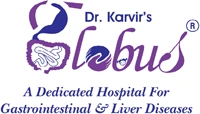ERCP treatment in Mumbai
ERCP (Endoscopic retrograde cholangiopancreatography) is a technique that combines upper gastrointestinal endoscopy and X-rays to treat problems related to the Bile and the Pancreatic ducts. For ERCP treatment in Mumbai Contact Globus Hospital, Malad West.
What are the Bile and Pancreatic Ducts?
The tubes that carry bile from the liver to the gall bladder and the duodenum are called bile ducts. Similarly, the tubes that carry pancreatic juice from the pancreas to the duodenum are called pancreatic ducts.
Why do doctors perform ERCP?
Doctors perform ERCP to examine bile and/or pancreatic ducts that have become narrow and get blocked. This blockage may be due to:
- Gallstones
- Pancreatic pseudocysts
- Trauma
- Surgical complications related to bile or pancreatic duct
- Acute pancreatitis
- Chronic pancreatitis
- Tumor of the Bile duct
- Tumor of the pancreas
Getting ready for ERCP
ERCP is done under general anesthesia/sedation. Talk to your doctor about your medical history and medicines you might be taking. There is a possibility that your doctor will advise you to stop taking some of them for a while. You should not eat or drink anything before the ERCP. The doctor will tell you when to stop eating or drinking.
Procedure of ERCP
ERCP is carried out under sedation to prevent gagging and to relax you. An endoscope is passed through your mouth, esophagus and finally reaches the duodenum. The endoscope has a small camera mounted at one end which shows clear pictures of the stomach and the duodenum. The doctor locates the opening where the bile and the pancreatic ducts empty their secretions in the duodenum. A thin tube called the catheter is then inserted through the endoscope into the ducts.
The ducts are made more visible on X-rays by injecting a special dye called the contrast medium into them. Fluoroscopy, which is a type of X-ray imaging is used to examine the blockages.
What is CBD Stenting?
During ERCP, the doctor may insert stents, tiny tubes that open up the narrowed ducts. The stent is put inside the bile duct using a small wire which is eventually removed once the stent is in place. The stent unblocks the bile duct so that it starts draining normally. Common Bile Duct (CBD) stenting may result in allergic reactions and breathing problems in some cases.
What is PD stenting?
A pancreatic duct (PD) stent is placed to reduce post-ERCP pancreatitis rates in high-risk patients. Endoscopic placement of stents plays a major role in the treatment of pancreas divisum, pancreatitis, pancreatic fistulae, and other complications related to the pancreatic duct.
Complications related to ERCP
ERCP is a safe procedure. However, complications may arise during any medical procedure. The most common problem after ERCP is pancreatitis which can cause abdominal pain. Call your doctor immediately, if you have any of the following problems after ERCP:
- Vomiting
- Chills
- Fever
- Abdominal pain
- Blood in the stool.
ERCP is less invasive than surgery and has a high rate of success. Doctors perform ERCP if are suffering from jaundice, have stones in the bile or pancreatic duct and then decide whether you need a surgery or not.
To know more about ERCP treatment in Mumbai book an appointment with Globus Gastroenterology Hospital call on 98331 06104, 98331 87118 or visit our hospital at 201, Second Floor, Kothari Milestone Mall, Near Natraj Market, S.V Road, Malad West - 400064. For hospital directions click here.


